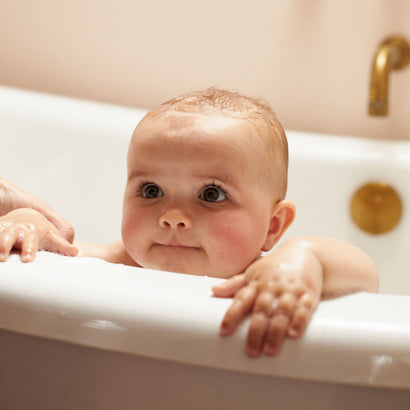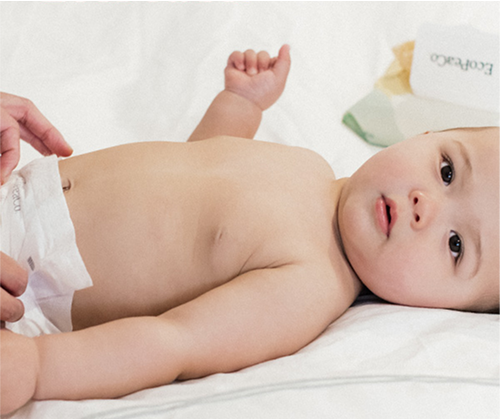Riding a bike is a rite of passage for many children, making them feel independent, competent, and proud. It’s also a wonderful way to bring family together, as bike outings are something almost every family member can participate in and enjoy. However, to ensure this activity is filled with fun, and not injury, there are a series of safety measures to keep in mind. Teaching your toddler these measures now not only helps ensure their safety as they’re learning to ride a bike, but also instills safe practices that will last a lifetime.
To set your child up for safety and success, consider the following.
Get the right safety gear.
In addition to a helmet, it’s wise to purchase elbow, knee, and wrist pads to minimize damage from falls. Regarding helmet fit, it should sit low on their forehead (only about two finger-widths above the eyebrow), they should be able to see the rim when they look up, and the side straps should form a Y right below their ears.
Be vigilant about helmet use.
Ensure your child always wears their helmet, even if they’re just riding around your backyard, as this promotes an essential safety habit. Confirm you’re buying a quality helmet (that the child will actually want to wear!) by taking them to a bike shop. At the shop, your child can select their preferred styles, and the staff can ensure proper fit. And, make sure the helmet you purchase has a CPSC (Consumer Product Safety Commission) sticker on it.
Note: If your child is in a crash, purchase a new helmet, as the quality of the used one could be compromised.
Dress them in bright colors.
Be sure cars and other bicyclists can easily see your child by dressing them in bright colors, or a reflective vest. The vest is especially important if they’re riding at dusk. It’s also smart to put reflective stickers on the helmet.
Select a bike that suits their abilities.
While some parents are tempted to purchase a bike that’s one level up from where their child is, it’s safer the bike meet the child where they are. For example, if your child currently needs training wheels, leave them on until they seem ready and willing to take them off, and you’re ready to spend the time teaching them how to ride. In addition, hold off on purchasing a bike with gears until your child’s ability level matches the skill level needed to navigate gears.
Make sure the bike’s not too big.
Ideally, your toddler’s feet easily touch the ground when they’re seated on the bike. This can significantly reduce their risk of injury, as it makes it easier for them to stop and steady the bike.
Stay off roads as much as possible.
Because cars, and toddlers on bikes, can be unpredictable, it’s safest to stick to sidewalks, bike paths, and other trails set off the road. If you have to ride on the road with your child, walk your bikes across intersections.
Teach them safety practices.
To establish safe habits, instruct your child to always keep their hands on the handlebars, never let another child ride on the bike with them, and to stash all belongings in a basket attached to the bike, or a backpack. In addition, make sure they know to always wear closed-toed, athletic shoes, and avoid loose clothing that could get caught in the chains.
Teach them biking etiquette.
While children under 10 shouldn’t ride on the road, it’s wise to start teaching them the etiquette for biking on the road as early as possible. The main lessons include fully extending the left arm before turning left, extending the right arm before turning right, and bending the left arm at the elbow before stopping.
They should also know to ride with traffic, instead of against it, look behind them before turning, and always be scanning for obstacles, such as cars backing out of driveways. And as stated before, have them walk their bike across intersections.
Give the bike regular tune-ups.
Regularly inspect your toddler’s bike, making sure the brakes, tightness of the chains, and tire pressure are in good order. If you don’t feel qualified to make this assessment, most bike shops provide tune-ups for a reasonable price.
Be firm with rules.
Because major biking injuries can occur when safety protocol isn’t followed, be hyper-vigilant about your toddler following the rules you lay out. For example, if they forget to wear their helmet, seem distracted when riding, or ride into the street when they’re supposed to be on the sidewalk, have them pullover and calmly explain that the ride won’t continue if they can’t be safe.
While this might seem like a lot for your toddler to absorb, slowly easing in to bike learning gives them plenty of time to adopt safe practices. Then, when they’re old enough to be in riskier bike environments, like the road, they’ll be prepared. And to ensure your toddler doesn’t burn out on all the rules, or resist your instructions, make sure you’re in a calm head space before starting a lesson, and focus on one safety measure at a time. Before you know it, they’ll be a cycling whiz who rides by every parent’s favorite motto: safety first.
Safe and happy trails!








